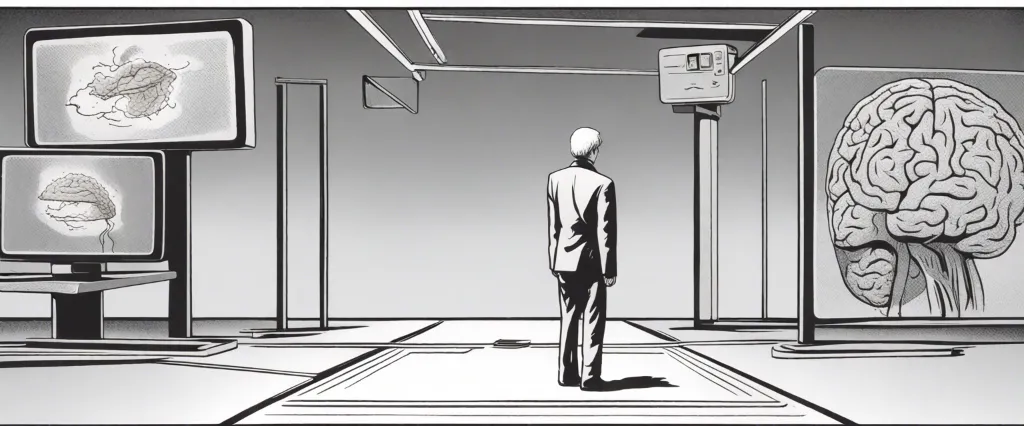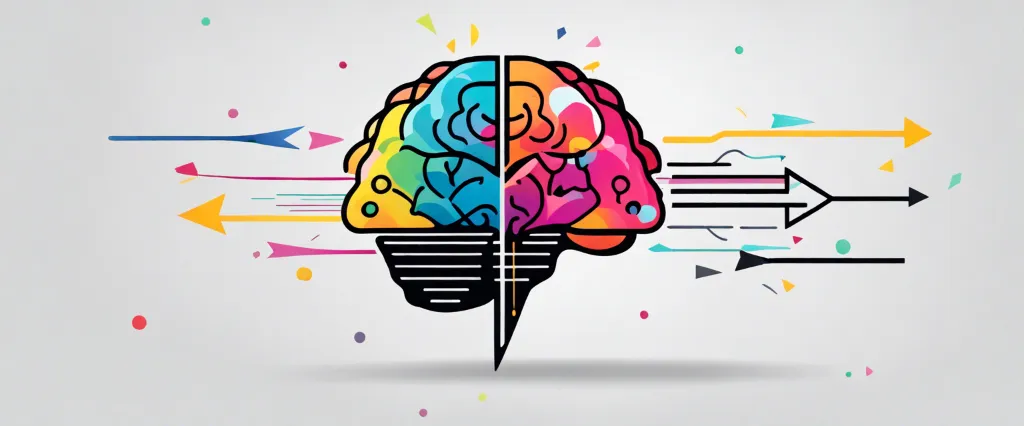In their book “Switch,” co-authors Chip Heath and Dan Heath explore the difficulties often faced when attempting to bring about transformative change, whether it be in individuals, organizations, or societies. Through captivating anecdotes and science-backed research, the authors reveal a fresh approach to overcome resistance and provoke lasting change in ourselves and others. Chip Heath, an American author, speaker, and professor, holds a PhD in Organizational Behavior from Stanford University’s Graduate School of Business. Known for his expertise in the fields of decision-making, motivation, and change, Heath brings a wealth of knowledge and practical insights to help readers navigate the complex realm of change and effectively drive positive transformation.
Chapter 1: Three Surprises About Change
In Chapter 1 of “Switch” by Chip Heath, titled “Three Surprises About Change,” the authors introduce us to the concept of change in organizations and explore why it can be difficult to initiate and sustain. They highlight three key surprises about change that challenge our conventional thinking.
The first surprise is the “rider,” a metaphor for our rational side, and how it isn’t enough to drive change on its own. The rider is characterized by analyzing, planning, and problem-solving, but it tends to overthink and get paralyzed by analysis. To overcome this, the authors emphasize the importance of appealing to the rider’s reason by providing crystal-clear and specific instructions for change.
The second surprise concerns the “elephant,” representing our emotional side. While the rider may be rational, it’s the elephant that holds the real power to make change happen. Emotions play a significant role in decision-making, motivation, and behavior. To create change, it’s crucial to motivate the elephant by tapping into positive emotions, providing the necessary incentives, and fostering a positive environment.
The third surprise revolves around the idea that change is not solely an individual struggle but is heavily influenced by the surrounding environment. This is depicted as shaping the path, where small tweaks in the environment can lead to significant changes in behavior. To facilitate change, the authors emphasize the importance of shaping the path by removing obstacles, creating a conducive environment, and ensuring support and encouragement.
Overall, this chapter serves as an introduction to the authors’ central frameworks: appealing to the rider’s reason, motivating the elephant’s emotions, and shaping the path to drive change effectively. It highlights the need for a holistic approach that integrates the rational, emotional, and environmental aspects of change.
Chapter 2: Find the Bright Spots
Chapter 2 of “Switch” by Chip Heath is titled “Find the Bright Spots” and focuses on the concept of identifying and leveraging successful examples in order to bring about change. The authors argue that instead of solely focusing on problems and their causes, it is essential to identify existing bright spots – instances where the desired change or behavior is successfully occurring.
The authors begin by sharing the story of Jerry Sternin, who was sent by Save the Children to Vietnam in the early 1990s to combat child malnutrition. Sternin discovered that despite the difficult circumstances, some families were able to raise healthy children. He decided to focus on these families, observing their behaviors and practices. Through his research, Sternin discovered that the successful families were feeding their children smaller meals but more frequently, using available resources creatively, and maintaining a diverse diet.
This principle of finding the bright spots is then applied to various fields, including education, healthcare, and business. The authors highlight the story of a high-poverty, low-achieving school in Houston, Texas, where educators identified bright spots – successful teachers who were achieving excellent results with their students. By observing these teachers and implementing their effective strategies school-wide, the school was able to improve significantly.
The authors emphasize that finding and analyzing bright spots helps to shift the focus from problems to solutions. By studying what is already working and replicating it, change can be initiated more effectively. They provide several guidelines for finding the bright spots: focusing on what is working, directing attention to the positive deviants, looking for small wins, and being concrete in identifying specific positive behaviors.
In conclusion, Chapter 2 of “Switch” highlights the importance of finding bright spots – successful examples of the desired change already happening – in order to understand and replicate effective strategies. By shifting the focus from problems to solutions, change can be accelerated and long-lasting.
Chapter 3: Script the Critical Moves
In Chapter 3 of “Switch: How to Change Things When Change Is Hard” by Chip Heath, titled “Script the Critical Moves,” the authors explore the importance of creating a clear and compelling plan for change in order to motivate and guide individuals and organizations towards success.
The chapter begins by highlighting the concept of the “action script,” which refers to a specific sequence of actions or behaviors that people need to follow to bring about a desired change. The authors emphasize that having a well-defined script is essential, as ambiguity breeds resistance and causes people to fall back into old habits. By providing a clear roadmap, a script can help overcome the obstacles that come with change.
Using several real-world examples, the authors illustrate how scripting the critical moves can be effective in various contexts. They discuss the case of Akshaya Patra, a nonprofit organization in India that successfully scripted the steps for expanding their meal program to serve millions of schoolchildren. By breaking down the change process into small, manageable actions, the organization enabled individuals to see progress and remain motivated.
Furthermore, the authors introduce the notion of “peripheral behavior,” which involves changing small, seemingly insignificant actions that have a ripple effect on broader behaviors. By targeting easy, specific behaviors, individuals can gain confidence and momentum, ultimately leading to larger and more impactful changes.
The chapter concludes with a set of guidelines for scripting critical moves. It emphasizes the importance of identifying target behaviors that are both specific and measurable, breaking down complex changes into small doable actions, and creating a plan that provides clear instructions. Additionally, the authors highlight the significance of celebrating small wins along the way to sustain motivation and build momentum.
In summary, Chapter 3 of “Switch” emphasizes the necessity of scripting the critical moves in order to facilitate successful change. By providing a clear action script, breaking down complex changes into manageable steps, and targeting peripheral behaviors, individuals and organizations can navigate the challenges of change and bring about lasting transformation.
Chapter 4: Point to the Destination

Chapter 4 of “Switch: How to Change Things When Change is Hard” by Chip Heath is titled “Point to the Destination.” In this chapter, the authors discuss the importance of providing a clear and compelling vision or destination to inspire change. They argue that while providing information and analysis is necessary for change, it is the emotional appeal of a well-communicated destination that truly motivates people to take action.
The authors introduce the concept of the “destination postcard,” a concise and vivid description of what the future will look like once the desired change has been achieved. By painting a compelling picture of the destination, leaders can create a clear image that resonates with people’s emotions and helps them see the potential benefits of change.
To illustrate the power of a destination postcard, the authors share the story of the transformation of the University of Illinois Memorial Stadium from a deteriorating facility to a state-of-the-art venue by Michael Kleeves, a facilities manager. Kleeves successfully motivated his team by showing them pictures of the desired outcome and asking them to envision the positive impact the renovated stadium would have on the university, the community, and the players.
The chapter also highlights the importance of reducing resistance to change by addressing “destination ambiguity” – the fear of the unknown future. The authors suggest that by providing small, manageable steps towards the destination, leaders can alleviate uncertainty and make change more approachable.
Overall, Chapter 4 emphasizes the critical role of a clear and inspiring destination in driving change. By appealing to people’s emotions and providing a visualization of the future, leaders can overcome resistance and rally individuals to take action towards achieving desired goals.
Chapter 5: Find the Feeling
Chapter 5 of “Switch: How to Change Things When Change is Hard” by Chip Heath is titled “Find the Feeling” and discusses the importance of appealing to people’s emotions as a catalyst for change. The chapter reveals that while facts and logic are crucial for change, the emotional aspect is equally necessary for motivating individuals to take action.
The authors begin by highlighting the story of Jerry Sternin, who successfully transformed child malnutrition in Vietnam by focusing on emotions. Rather than emphasizing the complexity of nutrition or using negative tactics to shame communities, Sternin built on the positive emotions of joy and pride. By identifying local mothers who were already overcoming the issue, he created a “positive deviance” approach that encouraged others to follow suit.
The authors also introduce the concept of “motivating the elephant,” which represents our emotional side. They explain that change can only be achieved if we engage both the rational and emotional aspects of our minds. One key strategy to do so is by employing vivid concrete language to evoke emotions, rather than relying on abstract terms or data that does not resonate with individuals.
Additionally, the authors explore the power of identity and social influence in driving change. They stress that people are strongly influenced by social norms and the desire to belong or conform to a group. By leveraging this aspect, change agents can shape behavior by demonstrating how others similar to them have acted differently in positive ways.
Overall, Chapter 5 of “Switch” highlights the importance of appealing to emotions and utilizing social influence to create lasting change. By understanding and engaging both the logical and emotional sides of individuals, change agents can effectively inspire action and overcome resistance.
Chapter 6: Shrink the Change
Chapter 6 of the book “Switch” by Chip Heath is titled “Shrink the Change” and focuses on the idea that making changes seem smaller and more manageable can greatly increase the probability of success.
The chapter starts by discussing how influential people can create an illusion of shrinkage by drawing attention to the progress made instead of the remaining tasks. Studies have shown that people are more motivated and engaged when they feel that they are moving forward, even if the progress is small. By highlighting small wins, individuals can be encouraged to continue on their path towards change.
The authors introduce the concept of creating “action triggers” to help make change more doable for individuals. Action triggers are specific, visible reminders that prompt people to take action. These reminders could be as simple as a sticky note on a computer screen or setting a reminder on a phone. By establishing these action triggers, individuals are more likely to follow through with the desired change.
Shrinking the change can also involve finding ways to make the new behavior fit more naturally into existing routines. The authors suggest the use of commitment devices, which can be rules or systems created to enforce desired behavior. By establishing a clear rule or system that supports the desired change, individuals can increase their chances of following through.
Another strategy discussed in this chapter is the importance of shaping the path. This involves making the desired change the default option, such as placing healthier food options at eye level or setting up automatic bill payments. By making the desired behavior more convenient and the alternative more difficult, individuals are more likely to engage in the desired change.
In summary, Chapter 6 of “Switch” emphasizes the importance of making change seem smaller and more manageable by focusing on progress, creating action triggers, establishing commitment devices, and shaping the path. By implementing these strategies, individuals can increase their chances of successfully making changes in their lives.
Chapter 7: Grow Your People
Chapter 7 of the book “Switch: How to Change Things When Change is Hard” by Chip Heath is titled “Grow Your People.” In this chapter, Heath focuses on the importance of nurturing and developing the individuals within an organization to successfully drive change.
Heath starts by highlighting the significance of a growth mindset, emphasizing that people have the ability to develop and improve their skills and abilities over time. He discusses how leaders should encourage this mindset within their teams by providing support, guidance, and constructive feedback to help people grow. By fostering a culture of continuous learning and development, organizations can enable their employees to be more adaptable and resilient in the face of change.
The author then introduces the concept of “high-expectation, low-control” environments, where leaders set high standards but allow individuals the autonomy to achieve them in their own unique ways. Heath emphasizes that empowered employees who have a sense of ownership and control over their work are more likely to embrace change and take initiative.
Heath also highlights the importance of celebrating small wins along the way, as this boosts motivation and momentum towards achieving larger goals. By recognizing and rewarding progress, leaders can create a positive and supportive environment that encourages people to keep striving for growth and change.
Lastly, the chapter focuses on the idea of finding and utilizing the strengths of individuals within an organization. By understanding and leveraging the unique skills and talents of each team member, leaders can assign tasks that align with their strengths, leading to higher engagement and overall performance.
In summary, chapter 7 of “Switch” emphasizes the significance of nurturing people’s growth, fostering a growth mindset, empowering individuals, celebrating small wins, and leveraging their strengths to enable successful change within an organization.

Chapter 8: Tweak the Environment
Chapter 8 of the book “Switch” by Chip Heath is titled “Tweak the Environment” and focuses on how changing the environment can effectively drive behavior change. The authors argue that often our behavior is shaped by the surrounding environment, and by making strategic tweaks, we can encourage desired behaviors and discourage undesired ones.
One example discussed in this chapter is the concept of “hot spots,” which are specific places or times that influence behavior significantly. By identifying these hot spots, we can leverage them to prompt positive change. For instance, New York City reduced crime rates by addressing hot spots such as subway stations and parks, focusing police attention and resources on these areas.
The authors also introduce the idea of an “action trigger” which serves as a reminder or cue to prompt a desired behavior. They explain how action triggers can be effective in creating new habits or reinforcing existing ones. One example given is the action trigger used by hospital staff to increase handwashing compliance. By placing colorful stickers with messages like “Did you wash your hands?” or “Remember, save lives” near soap dispensers, healthcare workers were constantly reminded to clean their hands, significantly improving hygiene practices.
Furthermore, the authors emphasize the power of social influence. They suggest that surrounding ourselves with people who exhibit the desired behavior can greatly impact our own behavior. They discuss the example of a college student who became an alcoholic due to his heavy-drinking peer group. Later, after a transfer to a new university with a different social scene, he successfully quit drinking. This highlights the significant role environment and social circles play in shaping behavior.
Overall, Chapter 8 of “Switch” underscores the importance of modifying the environment to facilitate behavior change. By identifying and leveraging hot spots, using action triggers, and harnessing social influence, individuals and organizations have the ability to create a supportive environment that encourages positive behaviors and discourages negative ones.
After Reading
In conclusion, “Switch” by Chip Heath explores the fascinating concept of how to make successful changes in our personal and professional lives. The book utilizes an engaging and insightful framework, the “Switch framework,” to break down the process of change into three key elements: the rider, the elephant, and the path. By understanding the importance of rationality and emotion, as well as identifying and modifying the external factors that influence our behavior, the authors provide practical strategies for creating lasting change. “Switch” is a thought-provoking read that offers valuable insights and applicable techniques to navigate the challenging terrain of change, ultimately empowering individuals and organizations to achieve their desired outcomes.
1. Influencer: The Power to Change Anything” by Kerry Patterson, Joseph Grenny, David Maxfield, Ron McMillan, Al Switzler
– This book, like “Switch,” explores the psychology of change and provides practical strategies for influencing others and making positive changes at an individual, organizational, or societal level.
2. Nudge: Improving Decisions About Health, Wealth, and Happiness” by Richard H. Thaler, Cass R. Sunstein
– Drawing on behavioral economics, Thaler and Sunstein discuss the power of subtle nudges in shaping people’s behavior and decision-making. The book offers insights into how small changes can have a big impact on achieving desired outcomes.
3. “Made to Stick: Why Some Ideas Survive and Others Die” by Chip Heath, Dan Heath
– Authored by one of the co-authors of “Switch,” this book provides valuable insights into how to create and communicate ideas effectively, ensuring they stay with people and inspire action.
4. The Power of Habit: Why We Do What We Do in Life and Business” by Charles Duhigg
– Duhigg delves into the science behind habits, exploring how they are formed and how they can be changed. By understanding the mechanisms of habit formation, readers can learn practical techniques for implementing positive change and breaking damaging routines.
5. Thinking, Fast and Slow” by Daniel Kahneman
– As a renowned Nobel laureate psychologist, Kahneman presents a comprehensive exploration of how our thinking processes work and shape our decisions. This highly insightful book examines the interplay between our intuitive, impulsive “fast” thinking and our more deliberate, rational “slow” thinking, shedding light on important factors that influence our choices and reactions.




